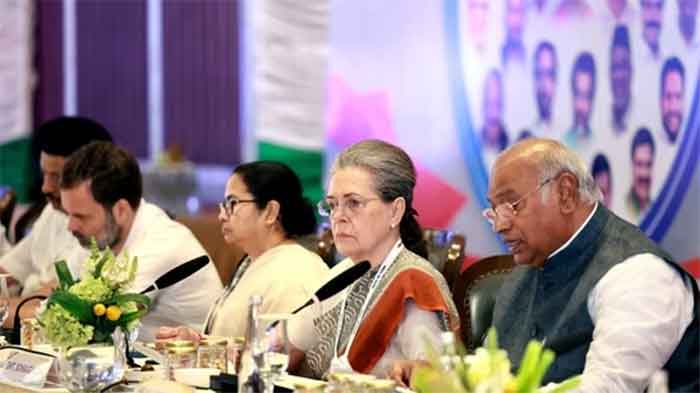
What should the political feud between Indian National Congress and Trinamool Congress (TMC) in West Bengal be viewed as? Clearly, it would be erroneous to limit this only to their differences over sharing of seats in Lok Sabha. At present, this feud is certainly helping regional leaders of both parties gain quite a bit of media coverage. There is nothing surprising about this. This appears to have become a part of Indian political culture, blaming rival parties more often to attract attention and gain media coverage. However, the political reality that media coverage doesn’t always guarantee electoral success has not yet sunk in among most- particularly politicians, except perhaps voters. If this was the case, media coverage accorded to Prime Minister Narendra Modi’s attempt to look like Rabindranath Tagore would have certainly helped Bharatiya Janata Party (BJP) defeat TMC in West Bengal assembly polls. Political success of Rahul Gandhi’s Bharat Jodo Yatra (Unite India March) would have extended beyond Karnataka and Telangana assembly elections. Pictures of Priyanka Gandhi Vadra with the broomstick would have probably helped Congress win more seats in Uttar Pradesh (UP).
Given the importance accorded by key leaders of these parties to fight against BJP as a strong opposition, loud bickering between them of any nature seems suggestive of their displaying political naivety, that too now, when this may only lead to their spelling their own defeat. Irrespective of the fact that at present BJP appears to have command over Hindi belt and that prospects of its defeat in Lok Sabha elections seem non-existent, several key factors cannot be ignored. BJP’s “success” or one may even say that “hype” about this is apparently commanded by popularity held by Modi among his fans, who have no qualms about describing themselves as “Modi-bhakts” and/or andh-bhakts (blind devotees). At present, no other politician can lay claim to a similar “popularity,” irrespective of whether this is viewed as manufactured, manipulated, fake or perhaps genuine.
True, political cards of this nature- publicity regarding blind devotees- may be regarded as bearing minimal electoral relevance beyond the Hindi belt, in the South and also in West Bengal. Besides, there is another angle to electoral cards exercised by master strategists planning BJP’s success. This implies, BJP’s “success” is not simply and only linked to usage of Hindutva-card, the Ayodhya-issue, communal-issues and/or similar such factors. If either of these bore any political or electoral credibility, India would not have been home to numerous parties, regional as well as those along caste, class, religious and various other lines. Yes, to a degree, Hindutva-card holds its sway in Hindi belt but not without politicking bordering along caste, class and other divisions. So, the political as well as electoral “credibility” of this card can be questioned from numerous angles. Yet, BJP’s political success cannot be ignored. And what about views held about BJP’s success resting primarily on “popularity” of Modi as well as limitations of the same?
Religious “credibility” of BJP’s political cards can to a degree be perceived by the manner in which Ayodhya-card is being used ahead of Lok Sabha polls. Religious importance of Ayodhya-issue is not being questioned but that of manner in which it is being played upon apparently for greater attention and so forth can certainly be deliberated upon. This also suggests that key players in such politico-religious exercises are doing utmost possible to stay in the lead on all fronts, be it regarding gaining media attention, using the Hindutva-card and so forth.
Where does this place opposition parties, who had not too long ago, committed themselves to a strong “alliance” against BJP? Nowhere. At least, this is suggested by the noise, regional leaders of key parties are making against each other. They are also not refraining from going overboard, but in a manner that cannot be expected to help their alliance gain confidence and votes. Perhaps, here is where BJP is far more shrewder than its rivals. Irrespective of whatever be divisions/differences within its own camp, the Hindutva-mask and periodical “religious” moves indulged in by saffron-brigade apparently play a key role in a common Modi-bhakt remaining unaware of the same. The degree to which various tools of social communication are used for this is probably a minor indicator of this shrewd strategy’s reach and impact.
BJP leaders also seem to be an expert at making noise about actual and/or manipulated weak points of opposition leaders. A key strategy of theirs seems to be drawing attention to this aspect and spreading “news” about opposition being too weak against them. There is no denying that this strategy assumes greater chances of succeeding when politicking of opposition leaders assumes nature of adding steam to it. In essence, this is what ongoing politicking in West Bengal seems to be heading for.
Perhaps, before it is too late, leaders of Congress, TMC and other parties of opposition need to focus more on their being actually aligned against BJP. Yes, prospects of BJP losing parliamentary elections are dim. Nevertheless, opposition parties can at least give BJP a good fight and gain significant number of seats to form a strong opposition. Besides, they must keep in mind, a good fight in these elections will enhance their political prospects in the post-2024 assembly as well as parliamentary elections. Quite a few opposition leaders have age on their side. A good fight now may spell a longer and better political innings for them. Or else, in subsequent polls too, they may stand nowhere!
Nilofar Suhrawardy is a senior journalist and writer with specialization in communication studies and nuclear diplomacy. She has come out with several books. These include:– Modi’s Victory, A Lesson for the Congress…? (2019); Arab Spring, Not Just a Mirage! (2019), Image and Substance, Modi’s First Year in Office (2015) and Ayodhya Without the Communal Stamp, In the Name of Indian Secularism (2006).












































